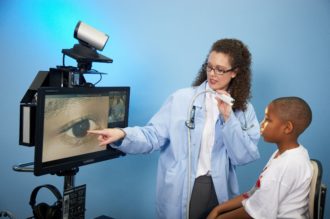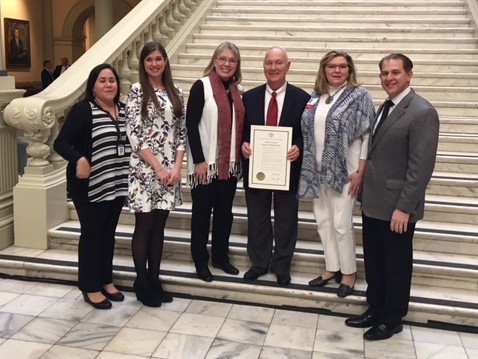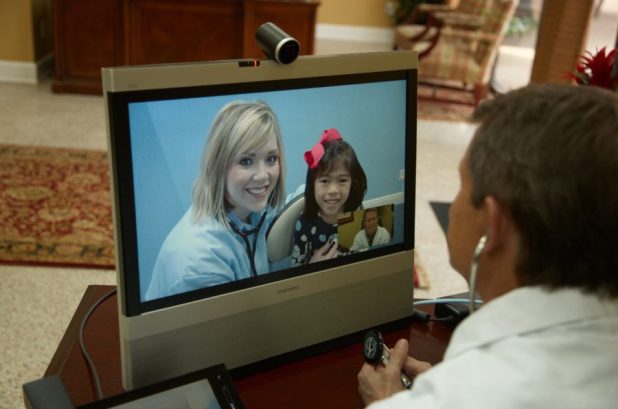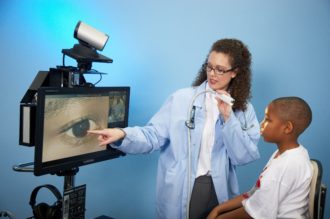Telemedicine is expanding in Georgia, yet there’s still ‘’a long way to go’’ before it reaches its full potential, the state’s Public Health commissioner said Tuesday.
Dr. Patrick O’Neal said access to health care in rural Georgia ‘’is a challenge for all of us.” But telemedicine, he said, is often the only way for many rural patients to get access to specialist care.

O’Neal made his remarks Tuesday at an event to celebrate Telehealth Day at the state Capitol.
Telehealth has increased over the past five years in rural America as technology has improved. That technology allows two-way, real-time interactive communication between the patient and a medical provider at a distant site.
The growth of telemedicine in Georgia continued recently with news of two initiatives.
A new federal grant will allow Augusta University to create a two-way connection with emergency rooms at five rural hospitals, providing remote consultation and health care services to their ER patients. The five hospitals are Miller County Hospital in Colquitt, Crisp Regional Hospital in Cordele, Emanuel Medical Center in Swainsboro, Washington County Regional Medical Center in Sandersville, and Wills Memorial Hospital in Washington.
“Residents of rural communities often lack sufficient access to health care services and specialized treatments, with no other option than to travel long distances to Augusta or forego treatment completely,” said Augusta University President Brooks Keel in a statement.

And another new telehealth program will allow 100 diabetic patients in rural Central and South Georgia to monitor their diabetes from home and interact with their doctors using a tablet provided to them, the Macon Telegraph reported.
Public Health said telehealth services in Georgia include maternal fetal medicine, HIV services and counseling, infectious disease care, psychiatry, pediatric emergency and critical care, hospital ICU, acute stroke, and general neurology.
These connections can deliver needed medical services to schools, homes, ambulances and other remote sites, says Jimmy Lewis, CEO of HomeTown Health, an association of rural hospitals in Georgia.

“It levels the specialist shortage [for rural patients] by providing access remotely to cardiologists, neurologists, psychiatrists, and psychologists’’ who are in urban areas, Lewis said recently.
Public Health runs 25 specialty telemedicine centers across the state, O’Neal said, adding that support from Gov. Nathan Deal “has been absolutely amazing.”
The CEO of the Global/Georgia Partnership for Telehealth, Rena Brewer, said Tuesday that Georgia has among the most robust networks in the U.S.
D.D. Fritch of Children’s Healthcare of Atlanta said that the pediatric organization has seen 7,000 patients through telemedicine since 2009.
And Dr. Gregory Esper of Emory said telehealth success areas include dermatology, eye care and electronic ICUs. More than 6,000 Georgians have received eyeglasses through the VA’s telemedicine program, Esper added.
One big challenge for growing telemedicine is getting insurer reimbursement for the physicians who do the remote consulting. O’Neal said. Increasing broadband capacity through rural areas is necessary as well, he added.
Meanwhile, a recent federal decision to end “net neutrality’’ rules has sparked concerns about potential damage to rural health care and telemedicine.
Rather than treat all Internet traffic equally, telecom companies will be able to divide the web into slow and fast “lanes.” The companies could charge more for faster connections. A slow lane, though, would disrupt the strong connectivity needed for telemedicine,
“Anything that will slow transmission makes me concerned,’’ O’Neal told GHN.
Here’s a recent GHN article on net neutrality and health care.


